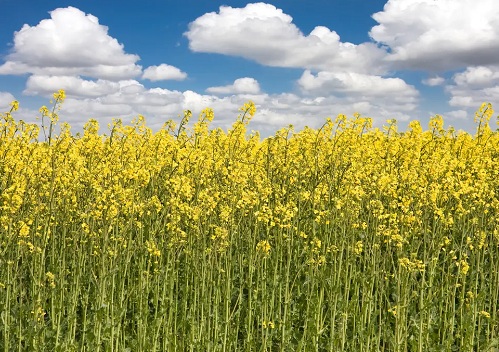SunSirs: 2023 China Domestic Rapeseed Market Trend and 2024 Forecast
January 11 2024 10:02:19 SunSirs (Selena)
From the data monitoring system of SunSirs, it can be seen that at the beginning of 2023, the domestic rapeseed market price was 7,184 RMB/ton, and at the end of the year, the market price was 6,332 RMB/ton, a decrease of 11.86% within the year. The highest average price of 7,400 RMB/ton appeared in March, and the lowest average price of 6,320 RMB/ton appeared in June.
Continuous decline stage: From March to April, rapeseed enters the traditional off-season, and the supply of aged rapeseed is scarce, and the purchase and sales have basically ended. The purchasing enthusiasm of the oil factory is not high, the market demand is weak, the delivery speed is slow, and the quotation is lowered. Domestic winter vegetable seeds will be gradually launched around May, and market purchasing and sales will gradually start. Downstream procurement is active, but after a slight increase in new rapeseed prices, downstream demand is poor, and prices have been lowered.
In the second half of the year, it first rose and then fell: mainly driven by the rise of downstream rapeseed oil and rapeseed meal, concerns about reduced rapeseed production due to weather conditions, and a stronger trend in spot prices of rapeseed meal and rapeseed oil. In addition, the dry weather on American beans has had a positive impact on the domestic rapeseed market. Boosted by holidays in September, downstream consumption has improved. Spring rapeseed began to go on the market in October, but the production was relatively low. The domestic rapeseed market is experiencing weak sales and purchases, with the market mainly focusing on essential purchases. In order to promote transactions, prices have declined.
The trend chart of domestic rapeseed in the past three years shows that the price of rapeseed in 2021 was at a low level in the past three years. The price in the first half of 2023 was higher than that in 2022, but since the launch of new rapeseed, the price in 2023 has been lower than that in 2022. The overall quality of rapeseed in 2023 has been poor compared to previous years, and downstream oil mills have not been proactive in purchasing, mainly focusing on essential demand, which has suppressed the domestic rapeseed market. On the other hand, the year-on-year increase in imported rapeseed in 2023 has negatively impacted the prices of domestically produced rapeseed.
In 2021, the domestic rapeseed production was 3.16 million tons, in 2022 it was 3.5 million tons, and in 2023 it is expected to be 3.42 million tons, with a slight decrease but not significant. At present, the growth of winter cabbage seeds is better than last year. The winter solstice has passed and rapeseed in the Yangtze River Basin is about to enter the overwintering period. Although it was affected by strong cold air in mid to late December, the duration of the low temperature is not long, and the temperature is rising rapidly, with relatively small frost damage. It is expected that domestic rapeseed will have a slight upward trend before the Spring Festival. In the first half of 2024, due to the gradual decrease in domestic rapeseed supply, traders have a strong attitude towards price support. After May 2024, new rapeseed will be launched one after another, with specific attention to rapeseed quality. In addition, the expected quantity of imported rapeseed in the first half of 2024 is sufficient. In the short term, it is expected that domestic rapeseed will experience a vibration and adjustment trend, with little price fluctuation.
If you have any questions, please feel free to contact SunSirs with support@sunsirs.com.
- 2024-04-26 SunSirs: Weakness and Decline in China Domestic Rapeseed Prices
- 2024-04-23 SunSirs: China Domestic Rapeseed Prices Declined (April 15-19)
- 2024-04-15 SunSirs: China Domestic Rapeseed Prices Remain Stable Last week (4.7-4.12)
- 2024-04-09 SunSirs: China Actual Shipment of Imported Rapeseed was 330,600 tons during March 16-31, 2024
- 2024-04-09 SunSirs: CGC Data Shows that approximately 420,000 tons Rapeseed Delivered by Farmers as The Week Ending March 31st



